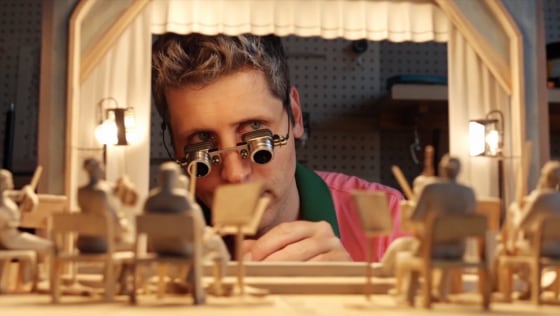The next generation of OpenAI's video generator is here.
Sora 2, the company's latest video and audio generation model, touts upgraded photorealistic video capabilities, and a new Sora app is being billed as a social platform for users to share, remix and discover AI-generated videos.
Introduced in a livestream Tuesday afternoon, Sora 2 represents the latest in a wave of multimedia generative AI tools allowing users to create increasingly realistic images, video and audio.
Building on previous AI image generation technology, Sora 2 allows users to create “cameos,” or guest appearances, of themselves and others in videos. The feature requires users to make a one-time video and audio recording of themselves to verify their identity.
Like many existing social media platforms, the Sora app will feature an algorithmic feed displaying videos tailored to users’ interests based on who they interact with and the topics they might engage with. The feed will include a "steerable ranking" system for users to further personalize what they want to see, according to details published by OpenAI.
Sora 2, builds on the original Sora model released in February 2024.
Whereas the initial version of Sora sometimes struggled to represent realistic motion, like a basketball bouncing off of a backboard, OpenAI said Tuesday that Sora 2 “is better about obeying the laws of physics.”
Demos presented on the OpenAI website showcased photorealistic action shots of stunts such as gymnastic tumbling and skateboarding tricks, although a clip of a martial artist performing in a koi pond featured a staff that couldn't seem to hold its shape.
Sora 2 is also seemingly able to generate speech, something the previous version of Sora was unable to do on its own.
"The model is far from perfect and makes plenty of mistakes, but it is validation that further scaling up neural networks on video data will bring us closer to simulating reality," OpenAI wrote in its announcement.
On Tuesday, OpenAI research scientist Gabriel Petersson showcased the model's cameo abilities by posting a video on X that featured his own likeness riding a dragon, diving off a cargo ship and running through the OpenAI office with the likeness of CEO Sam Altman.
The Sora app, powered by Sora 2, is now available for download on iOS systems, but access to the service remains invite-only. Users can request access through the app.
OpenAI signaled that it may roll out access slowly across the United States and Canada, initially giving users “generous limits” on video creation. AI systems like Sora 2 require intense computing power, so companies often have to limit user access to ensure the services remain accessible for others.
“Transparently, our only current plan is to eventually give users the option to pay some amount to generate an extra video if there’s too much demand relative to available compute,” OpenAI wrote in its launch announcement, referring to finite computing power.
OpenAI also acknowledged concerns about the app's potential risks, releasing a separate blog post on safety in tandem with the larger announcement.
All Sora-generated videos will include a watermark, as well as industry-standard metadata, to make clear they were made with AI, the company wrote. It added that users' likenesses can be turned into cameos only with their consent, which can be revoked at any time.
Teen accounts on Sora will also be subject to parental controls and time limits on their app usage.
"At creation, guardrails seek to block unsafe content before it’s made—including sexual material, terrorist propaganda, and self-harm promotion—by checking both prompts and outputs across multiple video frames and audio transcripts," OpenAI wrote in the post.

